How to make money with AI art in 2024
Are you looking for lucrative opportunities to make money with AI art? If so, you’re in the right spot.
We’re not talking chump change either – artists are selling AI pieces for amounts as staggering as $432,500!
This isn’t just another trend, it’s the future of art, and it’s a train you don’t want to miss. This post is your map to navigate the exciting, and at times bewildering, world of AI art. You don’t need a PhD in computer science, just a dash of creativity and a sprinkle of business savviness.
So, let’s get you started on your money-making journey with AI art. No more starving artist clichés — the future of profitable art is here and now.
Also read: 5 Types of Jobs That AI Can’t Replace
So, let’s first take a look at a few legal and ethical concerns that you should take into consideration before you start selling AI generated art.
Is it legal to sell AI-generated images?
Selling AI images is typically allowed, but there are important things to think about. You need to be careful not to use any copyrighted material, especially if the AI learned from copyrighted sources.
Also, remember that rules can differ depending on where you live, so it’s a good idea to chat with a legal pro in your area.
Do I Own the Legal Rights for the AI art Generated with AI tools?
According to the U.S. Copyright Office rules, AI-Generated art can’t be copyrighted. Read the full article here. However, you can still sell AI art. You’re just unable to enforce copyright, at least until any potential changes in the law.
MidJourney Commercial Use and Plan Options
MidJourney provides both free trial and paid plans. With the free trial, you can create and enjoy AI-generated images for personal use only (commercial rights are not included)
On the other hand, the paid plans come with commercial rights. Therefore, you can legally sell the AI-generated images or use them for commercial purposes.
How to Make Money with AI Art
Best Ways to Get Started.
1. Sell AI Art as Stock Photos
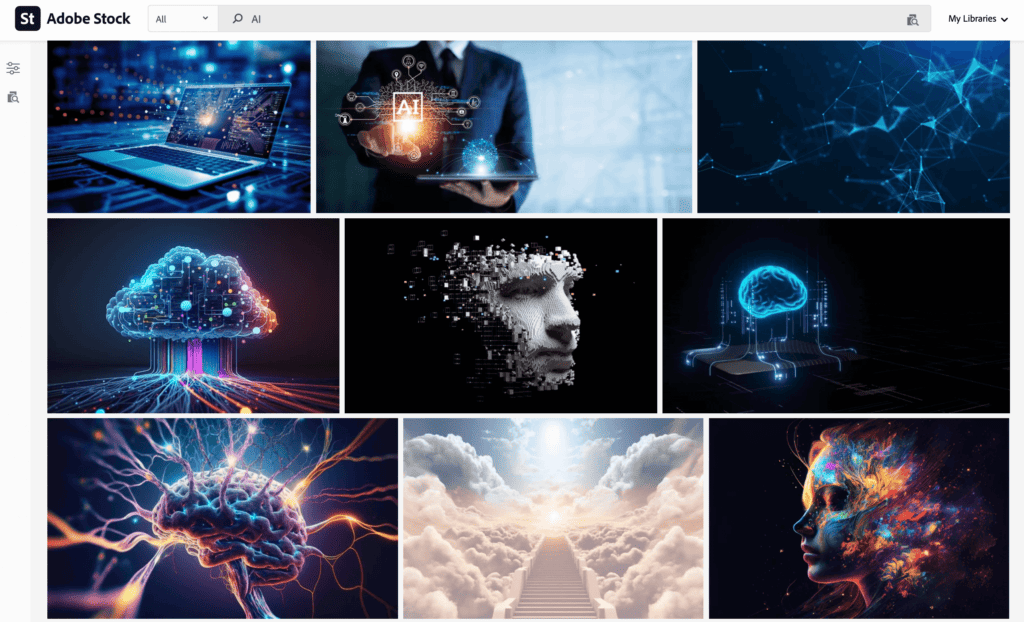
One way to monetize your AI art is to sell them on stock photo websites. Create AI images using platforms like DALL-E 2.0 or Midjourney and sell them on stock images platforms such as Adobe Stock, Shutterstock, and Dreamstime. Earn royalties for each sale, giving you a passive income stream from your AI creations.
Here’s how you can get started:
- Research Your Market: Explore the demand for stock photos in specific niches. Identify popular themes, styles, and concepts that resonate with potential buyers.
- Choose an AI Image Generator: Select a reliable AI tool like Midjourney or DALL-E 2.0 to create stunning and unique AI-generated images that cater to your chosen market.
- Upload to Stock Photo Platforms: Use platforms like Adobe Stock, Shutterstock, or Dreamstime to showcase and sell your AI art. Make sure the platform supports AI-generated content.
- Optimize and Promote: Craft descriptive titles, keywords, and tags for your images to enhance discoverability. Promote your stock photos through social media, blogs, and other relevant platforms to attract potential buyers and increase your sales.
2. Sell Print-On-Demand Products
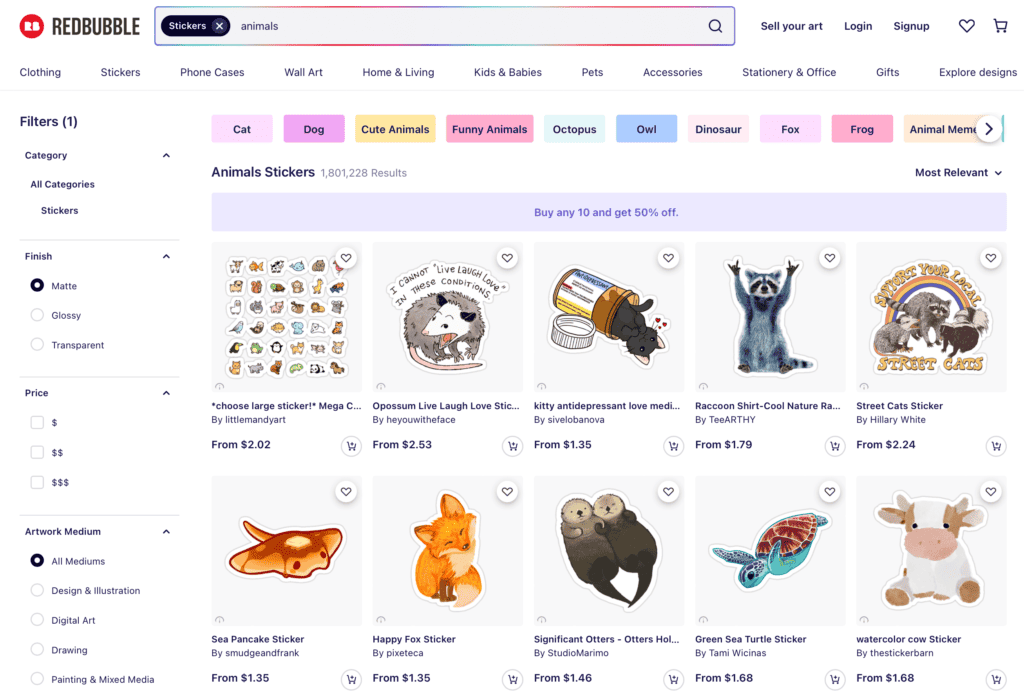
Make the most of your AI art by showcasing it on a range of physical goods. Platforms like Printful, Redbubble, and Society6 enable you to create T-shirts, posters, apparel, and home decor with your AI designs.
Just upload your AI-generated art, adapt it for various items, and set up a shop. When customers buy these products, the platform takes care of production and shipping, while you earn a share of the sale.
Here is a quick guide to get started:
- Create Your AI Art: Generate captivating AI artwork using tools like DALL-E 2.0 or Midjourney that align with your target audience’s preferences.
- Choose a Print-On-Demand Platform: Select a platform such as Printful, Redbubble, or Society6 that allows you to upload and sell your AI art on various products.
- Upload and Customize: Upload your AI-generated artwork to the platform and customize it to fit different products like posters, apparel, or home decor. Ensure your designs match the product dimensions and quality requirements.
- Set Prices and Publish: Determine competitive prices and set profit margins for your products. Once published, the platform handles production, shipping, and order fulfillment, while you earn a portion of the sale price.
3. Sell AI-Generated Design Elements as Digital Downloads
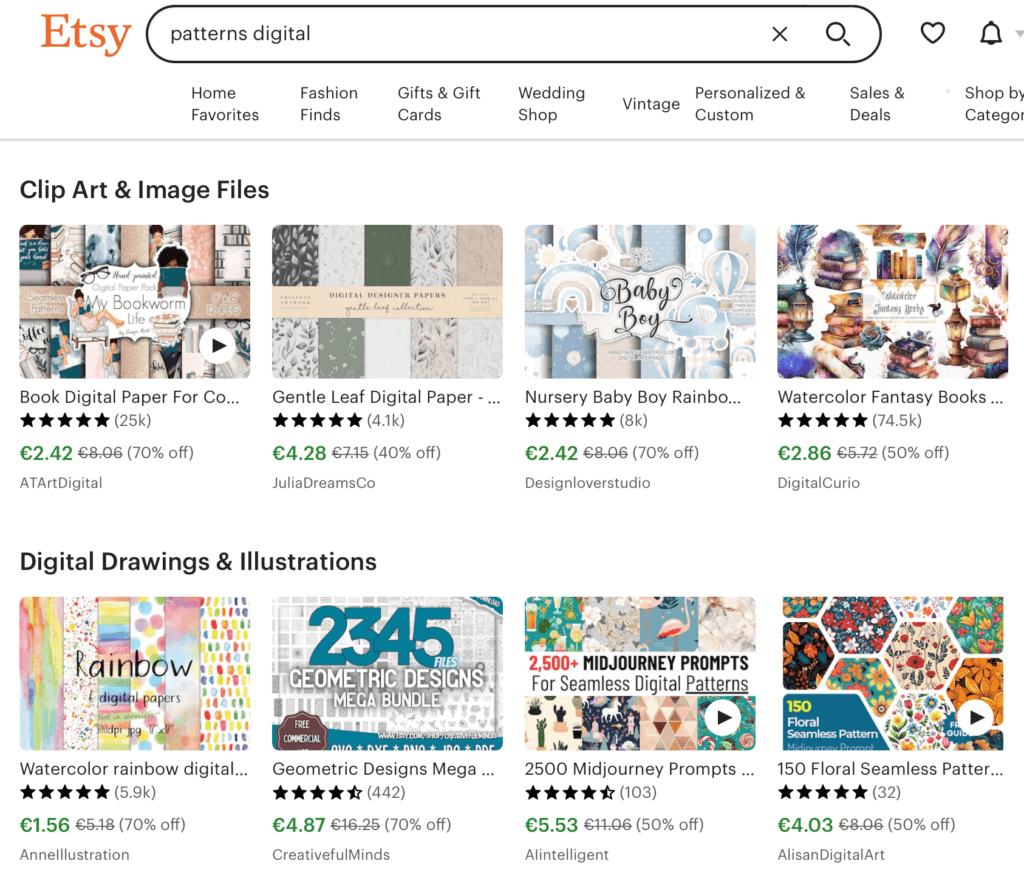
Sell your AI-generated design elements such as icons, textures, patterns, brushes, templates and more on platforms like Etsy.
Many graphic designers, marketers, and other creative minds often look for such resources to enhance their projects. This strategy lets you use your artwork in various ways without being limited to particular physical items.
Moreover, this is a passive income stream as once the digital asset is created, it can be sold repeatedly without additional effort, making it a highly sustainable income source.
4 Quick Steps to Start Selling AI Art Digital Downloads:
- Select Your Niche: Identify the specific type of digital downloads you want to offer. Consider your target audience’s needs and preferences.
- Generate AI Art: Utilize AI art generators to create high-quality, unique digital art pieces aligned with your chosen niche.
- Prepare Your Downloads: Ensure your AI-generated files are of top quality and appropriately formatted for various uses (e.g., PNG, JPG, PSD). Add descriptive titles, tags, and descriptions for better discoverability.Also read: Top AI Photo Enhancers
- Choose a Platform and List: Opt for platforms like Gumroad, Etsy, or your own website to showcase and sell your digital downloads. Create visually appealing listings with detailed previews and set reasonable prices. Once listed, buyers can purchase and instantly download your AI art creations.
4. Create and Sell NFTs (Non-Fungible Tokens)
Creating and selling NFTs (Non-Fungible Tokens) with AI art generators is an exciting opportunity that merges cutting-edge technology with the art market.
NFTs allow you to tokenize your AI-generated artwork on the blockchain, providing a unique and verifiable digital ownership of your creations.
Here’s how to do it:
- Select an NFT Marketplace: Choose a reputable NFT marketplace like OpenSea, Rarible, or Foundation to create your account and start listing your AI-generated NFTs.
- Upload Your Art: Prepare high-quality images or files of your AI art. Include detailed descriptions, titles, and attributes that highlight the uniqueness of each NFT.
- Define Rarity and Pricing: Determine the rarity of your NFTs. Consider creating different editions or levels of rarity. Set a price for each NFT based on factors like complexity, demand, and your artistic reputation.
- List and Promote: List your AI art NFTs on the chosen marketplace. Leverage social media, online communities, and your existing network to promote your NFTs and attract potential buyers. Engage with your audience to build a connection and showcase your AI creativity.
5. Sell AI Art Text Prompts on Gumroad
Turn your creative process into a source of income by selling the text prompts that fuel AI art. Platforms like Gumroad or your personal website are perfect for packaging and selling these prompts.
Craft engaging and inspiring prompts that spark AI creativity. Artists who seek to experiment with AI will find value in these prompts.
Here are 4 Quick Steps to Monetize AI Art Text Prompts:
- Craft Compelling Prompts: Develop a collection of engaging and thought-provoking AI art text prompts that ignite creativity and experimentation.
- Choose a Platform: Decide whether you’ll sell your prompts through platforms like Gumroad or on your personal website. Ensure the platform allows for easy payment processing and delivery.
- Package and Market: Create a visually appealing package for your prompts. Include a brief description of how artists can use them and the benefits they’ll gain. Use social media, blogs, or artist communities to promote your prompts.
- Set Up Shop: If using a platform like Gumroad, set up your product listing, pricing, and payment options. For a personal website, create a dedicated page to showcase and sell your AI art text prompts.
6. Create and Sell Coloring Books
You can also tap into a distinct market by transforming your AI art into coloring book pages tailored for Amazon Kindle Direct Publishing (KDP).
Here’s the deal – people love coloring books, no matter their age. Kids, grown-ups, everyone! And with AI, you can come up with all sorts of themes and styles and you can pick the ones that suit your target audience the most.
4 Quick Steps to Get Started:
- Generate AI Art Images: Utilize AI art generators to create a collection of intricate and visually appealing images suitable for coloring.Here are some coloring book pages prompt examples.
- Design Coloring Book Pages: Transform your AI-generated images into coloring book pages by simplifying the outlines and enhancing the contrast.
- Compile the Coloring Book: Organize your coloring book pages into a cohesive theme or style. Create a digital version using graphic design software or tools like Canva.
- Choose a Publishing Platform: Decide where to sell your coloring book, whether on platforms like Amazon Kindle Direct Publishing (KDP) or through your own website. Ensure your coloring book is available in both digital and print formats.
7. Create Custom AI Art For Clients
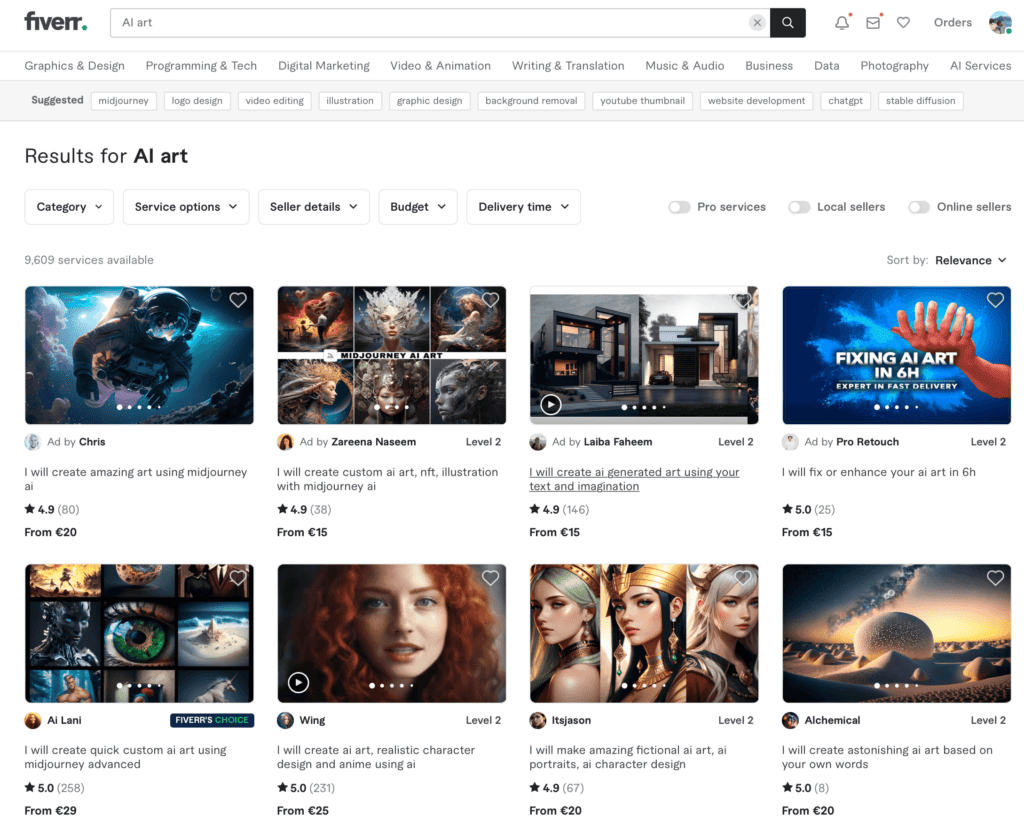
Offer personalized AI art services to clients seeking one-of-a-kind creations. Set up a website or use platforms like Upwork to promote your custom AI art offerings. Collaborate closely with clients to understand their preferences, requirements, and vision.
Use AI tools to generate unique pieces that align with their specifications. Providing tailored AI-generated art allows you to cater to individual preferences while earning a fee for your artistic skills.
Here’s how to get started:
- Set Up Your PlatformChoose a platform to showcase your custom AI art services. This could be your own website, social media profiles, or freelancing platforms like Upwork.
- Define Your ServicesClearly outline the range of custom AI art services you offer. Specify the types of projects you can undertake, such as portraits, landscapes, abstract art, or specific themes.
- Collaborate and Understand Client NeedsWhen a client approaches you, engage in thorough discussions to understand their preferences, vision, and requirements. Gather details like color schemes, styles, and any specific elements they want in the artwork.
- Create and Deliver Tailored ArtUtilize AI tools to generate unique art pieces based on the client’s specifications. Pay close attention to details to ensure the final piece aligns perfectly with the client’s vision.
8. Create An Online Course about AI Art
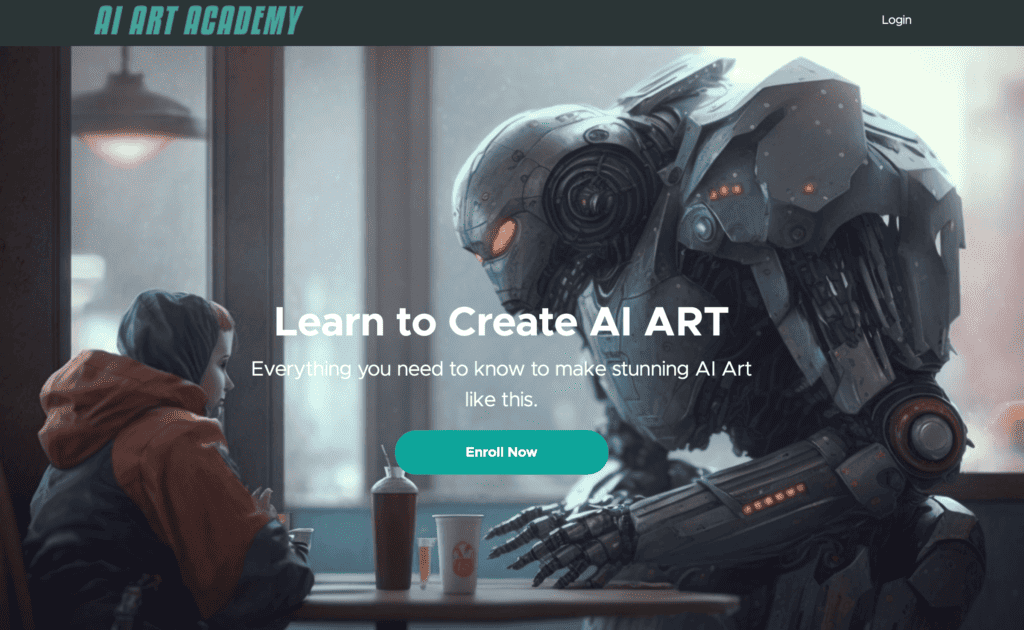
Earn money with your expertise in AI-generated art by teaching others. Platforms such as Udemy, Teachable, and Skillshare let you create and sell online courses or workshops.
Engage your students with video lessons, quizzes, and practical assignments. Through these platforms, you can reach a wider audience eager to learn from your AI art skills.
Quick steps to get started:
- Choose Your Platform: Select a suitable platform like Udemy, Teachable, or Skillshare to host your course. Consider factors like audience reach, ease of use, and revenue-sharing options.
- Develop a Curriculum: Create a structured curriculum that covers key aspects of AI-generated art, from tools and techniques to creative applications. Plan out modules, video lessons, quizzes, and assignments.
- Create Engaging Content: Record video lessons that are engaging, informative, and visually appealing. Use a mix of presentations, demonstrations, and real-time creation to keep students interested.
- Publish and Promote: Publish your course on the chosen platform and leverage social media, your website, and relevant online communities to promote it. Engage with students, answer questions, and continuously refine your content based on feedback.
9. Write and Sell Ebooks about AI Art
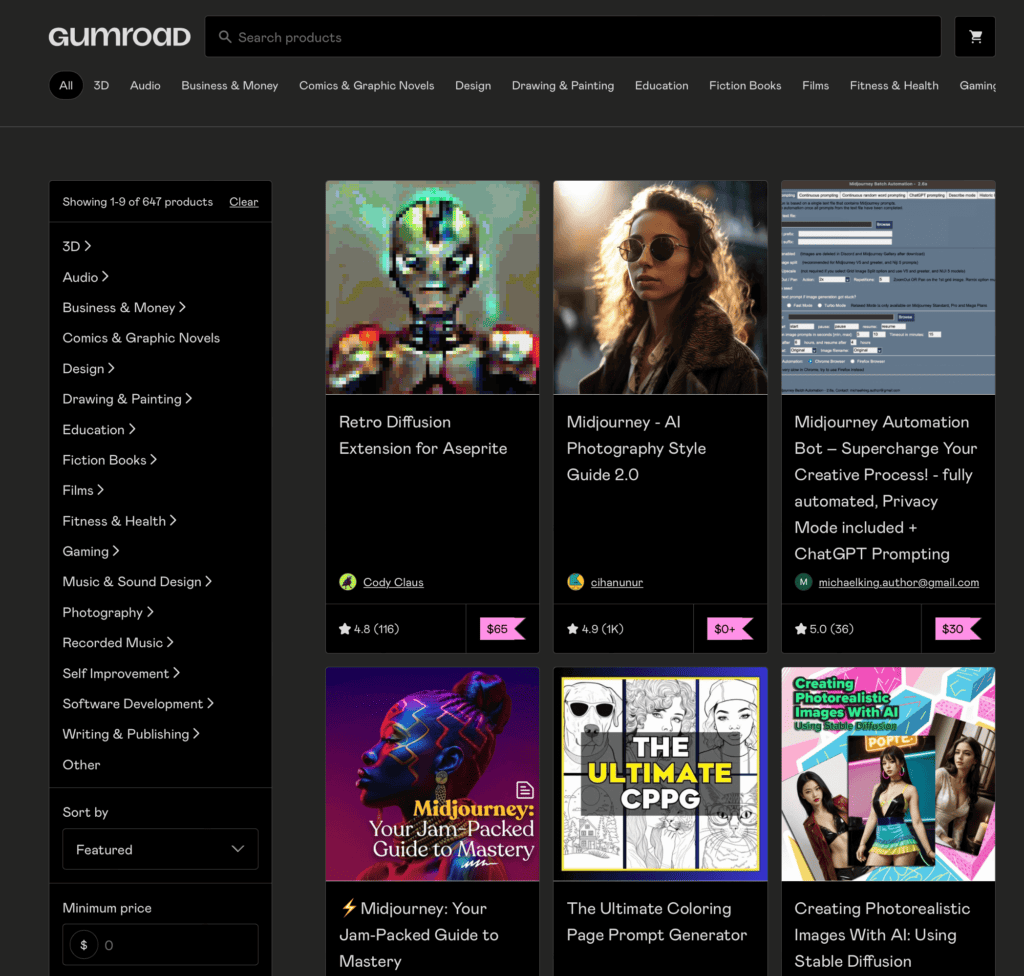
Share your expertise by creating comprehensive ebooks or guides on AI-generated art. Structure your content to provide insights, techniques, and step-by-step tutorials for aspiring AI artists.
Self-publish your ebooks on platforms like Amazon Kindle Direct Publishing or Gumroad.
This enables you to educate others about the world of AI art while generating passive income from your informative guides.
- Choose Your Niche: Select a focused topic within AI-generated art that you’re knowledgeable about.
- Plan Your Content: Outline chapters and key points for your ebook or guide.
- Create Engaging Content: Write clear, concise content with step-by-step instructions and examples. Create an eye-catching book cover and detailed description.
- Publish and Promote: Create a launch plan. Self-publish on platforms like Kindle or Gumroad, then market through social media and your website.
Having walked the path of an Amazon Kindle publisher myself, I want to offer you some friendly advice. If you’re aiming for success in the world of publishing, there are a few important things to keep in mind. Learning about the publishing process, including finding the right topics and keywords, is key.
Also, don’t forget the power of reader reviews – they’re like the wind beneath your book’s wings. Plan ahead for your book launch and get people to leave reviews as soon as your book is out there.
And here’s a little secret: the journey doesn’t stop at one book. You might need to write a few more in the same area and build a personal brand so that people start seeing you as an authority. It might sound like a lot, but every step forward is a step toward your goals.
10. Create an AI Art Newsletter on Substack
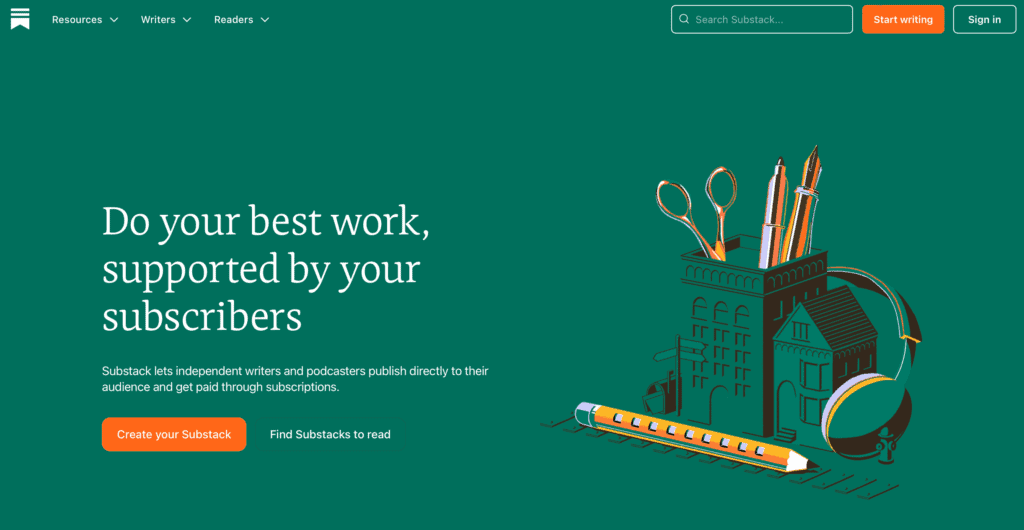
If you love AI art and want to share your insights, Substack is a great way to make money from your expertise.
With Substack, you can create a newsletter that talks all about AI art or how to make money selling AI art.
How to get started:
- Define Your Niche: Identify your specific focus within AI art that will attract a target audience.
- Craft Compelling Content: Write engaging articles, tips, and tutorials related to AI art.
- Choose Subscription Model: Offer both free and paid subscription options for exclusive content.
- Build Your Subscriber Base: Promote your newsletter through social media, AI art communities, and your website.
As your subscriber count grows, your earnings can also increase, making Substack a rewarding venture that not only allows you to share your insights but also brings in a meaningful income.
Here is an earning estimator that you can experiment with on the Substack website:
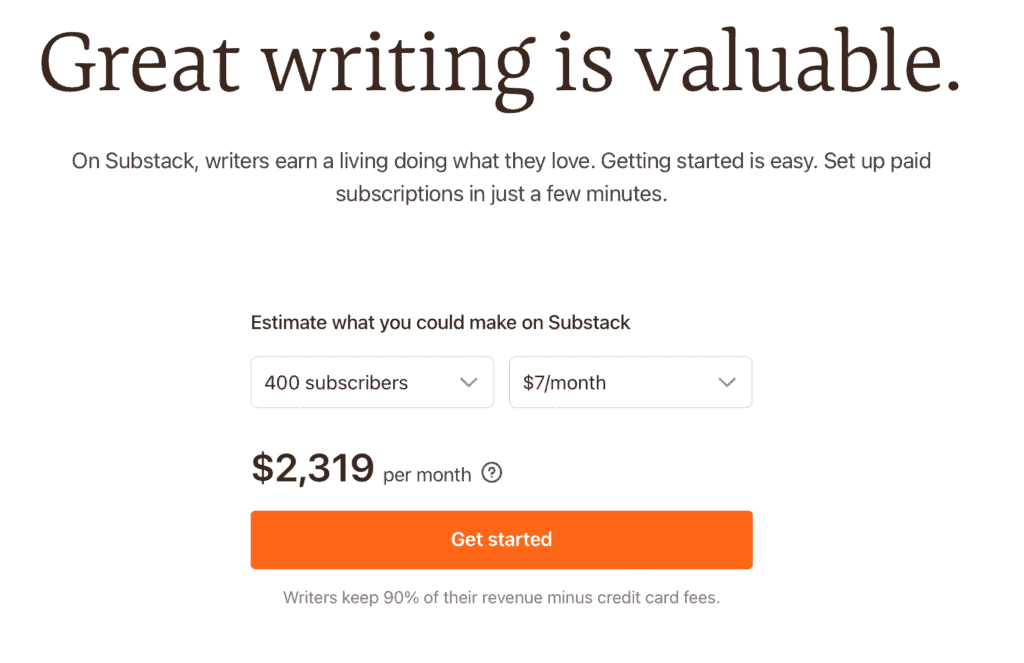
What is an AI art generator and how does it work?
An AI art generator is a tool that uses artificial intelligence to create art. These art generators work by employing a type of artificial intelligence known as neural networks.
These complex algorithms are made to copy how our brains work, helping the machine learn from the information it gets.
An AI art generator typically uses two neural networks – a Generator and a Discriminator. The Generator creates images from random noise, while the Discriminator evaluates these images for authenticity. Through a process called Generative Adversarial Networks (GANs), these two networks work together, continually improving the Generator’s ability to produce art that is increasingly convincing.
Best AI Art Generators
Midjourney
Midjourney is a powerful AI image generator that allows you to create AI generated art. With its intuitive interface, creating AI art is easy and straightforward even for those without a background in design or art.
DALL-E 2.0
DALL-E 2.0, developed by OpenAI, is another exciting tool for generating AI digital art. This innovative platform is capable of creating images from textual descriptions, giving you the power to translate any concept or idea into a visual masterpiece.
Stable Diffusion
Stable Diffusion is a special tool that turns text into realistic pictures. It lets you create amazing art quickly and easily. You can use Stable Diffusion online for free and make beautiful artwork without any hassle.
Other AI Art Generators:
- BigSleep
- WOMBO Dream
- Starry AI
- DeepDream
- NeuralStyle
- RunwayML
- Artbreeder
- StyleGAN
- Jasper Art
- NightCafe
Final Thoughts
The world of AI art is your canvas for creating both beauty and income.
From selling your masterpieces as stock photos or on print-on-demand products to diving into the world of NFTs for a unique digital ownership experience, the options are wide open. You can even craft custom AI art for clients or share your knowledge through online courses, ebooks, and newsletters.
But remember, while the possibilities are exciting, success doesn’t happen overnight. It takes lots of learning, dedication, and adapting to the ever-changing AI art scene.
But if you stick to just one thing and keep improving your workflow and methods, you can turn your passion into profits, too.
